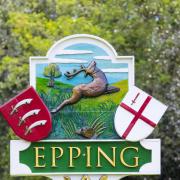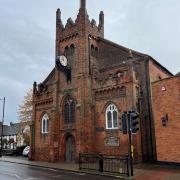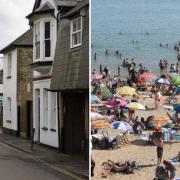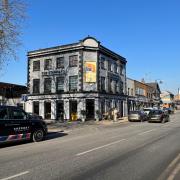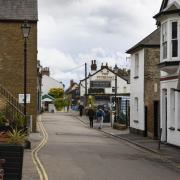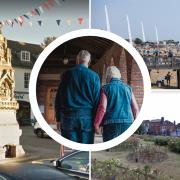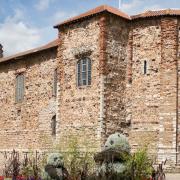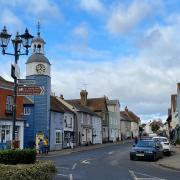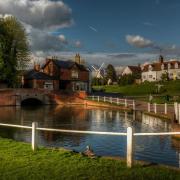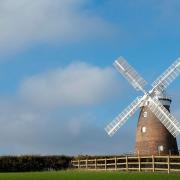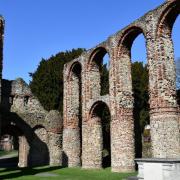Charlotte Embling continues her alphabetical tour of the county with a look at I to Q.
IIslandsWith more than 30 islands incorporated within the county's borders, Essex boasts more than any other English county. Off shore outposts of Essex include Bridgemarsh, Canvey, Cindery, Cobmarsh, Foulness, Great Cob, Havengore, Horsey, Lower Horse, Mersea, Rushley, Skippers, Two Tree and Wallasea. Foulness Island is the fourth largest island by area off the coast of England, while Canvey Island is the fourth most highly populated island in English waters. Meanwhile, Mersea Island is the most easterly permanently inhabited island off the English coast.
IngatestoneThe standing stones by which the village of Ingatestone earned its name were deposited in the area by glaciers. They have been preserved in situ and can be seen on either side of the entrance to Fryerning Lane as well as near the parish church. This idyllic village is also famous for Ingatestone Hall, a 16th century mansion owned by the Petre family which lies on the outskirts of the village and is set in 11 acres of ground.
Innovation Essex has a reputation for being at the forefront of innovative thinking and has been home to some important inventers and innovators throughout history. Of course, Chelmsford is hailed as the 'birthplace of radio' after Guglielmo Marconi opened the world's first wireless factory in Hall Street in 1898 and Chelmsford was also the location for the first official publicised sound broadcast in the UK on June 15, 1920. Joseph Lister, recognised as the father of modern surgery, was born in Upton in Essex in 1827. His use of carbolic acid as an antiseptic dramatically improved the survival rates of patients.JJam Wilkin & Sons Ltd have been making jam in Tiptree for more than 120 years. The company was founded in 1885 by Arthur Wilkin and is today run by his great-grandson Peter Wilkin. Farming almost 1,000 acres of land in and around Tiptree, Tiptree conserves are famous worldwide and the company holds Royal warrants for both jam and marmalade.
Jumbo Water TowerThe Jumbo Water Tower in Colchester was built in 1883 and consists of 1.2 million bricks, 450 tonnes of cement and 369 tonnes of stone. It was named Jumbo by the rector of St Mary's-at-the-Walls church, after the elephant sold by London Zoo to PT Barnum. The tank was built to hold 220,000 gallons of water but it was never filled to capacity as it was not strong enough.
JoustingOne of the great spectacles of medieval times, jousting was a sport of knights and kings, Henry VIII being a particular enthusiast in his youth. Just as it was then, Essex is home to some of the country's great jousting matches. For a chance to experience a show of medieval magnificence, visit Hedingham Castle on the spring and August Bank Holidays with fantastic displays put on by the Knights of Royal England.
KKnightsEssex has famous sons from all walks of life who have grown to become knights of the realm. Among them are actor Sir Ian Holm from Goodmayes (perhaps best known for his performance as Bilbo Baggins in The Lord of the Rings trilogy), businessman Sir Alan Sugar from Brentwood and mathematical astronomer Sir Roger Penrose from Colchester. The 1966 football World Cup-winning manager Sir Alf Ramsey was from Dagenham, and although he and various players were knighted, the question is always asked, why was Bobby Moore, the team's Barking-born skipper, never knighted?
Kelvedon Hatch Kelvedon Hatch is situated to the north of Brentwood. Outside the village on the road to Ongar is a bungalow, within which lies the entrance to the Secret Nuclear Bunker. After being built in the early 1950s, it became the regional Government bunker for London in the case of nuclear attack during the 1960s due to the threat of the Cold War. Built 125 feet underground it has the capacity to house 600 people. It was decommissioned in the early 1990s and is now a popular visitor attraction open to the public.
King Edward VI Grammar School Chelmsford's King Edward VI Grammar School is one of the top state schools in the country. Established by Edward VI in 1551, it moved to its present site in 1892. Although boys only up until Year 11, the school has a mixed Sixth Form. The school also has some notable alumni including John Dee, mathematician, astronomer and consultant to Elizabeth I; Grayson Perry, the 2003 Turner Prize winner, and Ray Smith, a former Essex County cricketer.
LLeigh-on-SeaLeigh-on-Sea is a picturesque village located on the coast in the Thames estuary. For most of its history it has been a fishing village and is today noted for its cockles and stunning scenery. The annual Old Leigh Regatta is held over a weekend each September and celebrates the traditional atmosphere and industry of the village. The celebrity hairdresser Lee Stafford is from Leigh, as was the author of The French Lieutenant's Woman, John Fowles.
Layer Marney TowerBuilt during the reign of Henry VIII by the 1st Lord Marney, a member of the Privy Council, Layer Marney Tower is the tallest Tudor gatehouse in Britain. It offers magnificent views, not just of the estate itself, including the farm and gardens, but also to the Blackwater estuary. The farm uses traditional methods and has traditional breeds of animals.
Lakeside Shopping CentreLakeside in West Thurrock is one of the largest shopping centres in the whole of Europe. It boasts more than 1.3 million square feet of retail floor space with more than 320 shops, four major department stores and more than 30 cafes and restaurants. It also houses a seven-screen cinema and a chapel. To accommodate shoppers there are 13,000 free car parking spaces and there is even a nearby retail park providing the perfect tonic for Essex shopaholics.
MMarathon ManRainham's Lloyd Scott, is one of the county's most inspiring human beings. He probably came to most people's attention when he 'ran' the London Marathon in a deep sea diving suit in 2002, but has in fact been running marathons since 1989 after being diagnosed with leukaemia. He has raised millions of pounds for charity and this year he ran the London Marathon in a nine-foot-tall iron giant costume.
Maldon The town of Maldon is located on the Blackwater estuary. The town has been immortalised in the epic poem The Battle of Maldon detailing a Viking raid in 991 where the Vikings defeated the native defenders. Maldon sea salt is also a familiar product on supermarket shelves, it is entirely natural and produced using traditional methods. Maldon is also home to one of the county's most quirky celebrations. The annual Maldon Mud Race occurs around New Year's Day and involves competitors racing across Blackwater estuary at low tide.
Marks HallThe estate of Marks Hall was left to the nation by Thomas Phillips Price who owned it from 1898 until his death in 1932. The mansion house deteriorated to such an extent that it was demolished, but the 200 acres of grounds are well worth a visit. The 100 acres of arboretum are home to trees from every continent, the 17th century Walled Garden contains five separate gardens and there are a number of walks through the woodland outside of the gardens.
NNatureNature lovers are truly spoiled in Essex. The marshland of the Essex coast provides the ideal environment for a huge variety of birds, and the estuaries and inlets are perfect places to go seal spotting. The otter population is also making a comeback along the county's rivers after almost being wiped out in the 1980s. The Essex Wildlife Trust manages more than 7,000 acres of land in Essex and has seven visitor centres.
North Weald AirfieldEstablished in the summer of 1916, North Weald Airfield was initially involved in protecting London from Zeppelin raids during World War I. It was developed during the inter-war period and during World War II Hurricanes from the airfield were deployed over Dunkirk and involved in the Battle of Britain. Now owned by Epping Forest District Council, it is home to the North Weald Airfield Museum and collections of classic aircraft.
NavigationThe Chelmer and Blackwater Navigation links Chelmsford with the River Blackwater at the Heybridge Basin. It was designed by John Rennie and constructed between 1793 and 1797 in order to carry freight to Chelmsford. It continued to carry commercial freight until 1972, after which it was opened to pleasure craft. Today it is still owned by the original owners, The Company of the Proprietors of the Chelmer and Blackwater Navigation Ltd, but maintained by Essex Waterways Ltd.
OOystersEssex oysters are famous far and wide. The native oyster has been cultivated in Essex since before Roman times and Caesar is said to have exported them to Rome. There are oyster beds across Essex at sites in Burnham, in the Colne and around Mersea Island. Off Mersea the start of the oyster season, which runs from September to April, is celebrated at the end of August with a Gin and Gingerbread Ceremony, the origins of which date back to 1540.
OutlawsThe famous highwayman Dick Turpin was born in Essex in 1706. A member of the Essex Gang who terrorised houses in East Anglia, his increasing notoriety forced him to live rough in Epping Forest, robbing any who passed through. He was eventually hunged in York. The Essex coastline has also been notorious for smugglers who would use the county's numerous islands as excellent places to land goods which were often transported inland up the Thames, Crouch and Stour rivers.
OngarThe town of Ongar dates back to at least the Saxon period and was an important market town during medieval times. It was the administrative centre of the Ongar Hundred and had a Norman castle, the remains of which can still be seen. With more than 100 listed buildings it was one of the first Conservation Areas designated by Essex County Council.
PPigsThe Essex Pig was mainly found in East Anglia. It was thought to have become extinct in 1967 when Essex Pigs were bred with Wessex Saddlebacks to produce the British Saddleback. Thanks to the Essex Pig Company, made famous by Jimmy Doherty's Jimmy's Farm TV series, and the Essex Pig Society, the Essex Pig is making a comeback after one farmer was found who had never allowed his pigs to breed with the Wessex.
Peasants' RevoltThe Peasants' Revolt of 1381 that nearly toppled the monarchy started in the village of Fobbing in Essex. The causes of the revolt were many, but the immediate trigger was Richard II imposing the third poll tax in four years. The uprisings soon spread across Essex and Kent and rebels marched on London, meeting the King at Mile End. Richard II agreed to the demands of the peasants, sent them home, then broke his promise and killed hundreds of the rebels.
PeninsulasWith so many inlets, islands and river mouths, the Essex coastline has naturally formed peninsulas. The Dengie Peninsula is formed by the River Crouch to the south and the River Blackwater to the north. The easternmost part makes up the Dengie Marshes. The Tendring Peninsula is home to the Sunshine Coast and seaside resorts including Clacton-on-Sea.
QQuaintFor those not familiar with Essex, 'quaint' may not be the first word to spring to mind as a description of the county. But for those in the know, the beautiful countryside and coastline which forms the backdrop for our characteristic villages is as typical of England's green and pleasant land as any other county. A walk or drive through Essex will take you through idyllic villages with greens, ponds and cricket pitches, with a delightful mix of churches, cottages and colourful architecture. A taste of which you can also experience each month in Essex Life.
Queen Elizabeth Hunting LodgeThe Queen Elizabeth Hunting Lodge is a timber-framed, Grade II listed Tudor hunt standing. It was built for Henry VIII in 1543 and was originally known as the Great Standing. Its purpose was to provide a vantage point for guests to get a good view of the hunt and to participate with their crossbows. Today it is open to visitors all year round with exhibitions on subjects such as Tudor food and costume.
QuendonThe village of Quendon lies between Saffron Walden and Bishop's Stortford and is in the civil parish of Quendon and Rickling. There is evidence of human occupation in the area thousands of years ago and Rickling is mentioned in the Domesday Book. The village still has many 17th and 18th century buildings and is also known as the home of the writer William Winstanley, who is credited with reviving Christmas after the death of Oliver Cromwell, and is said to have lived in the village in the 17th century.
If you missed the review of A to H click hereTo read the final installment click here



